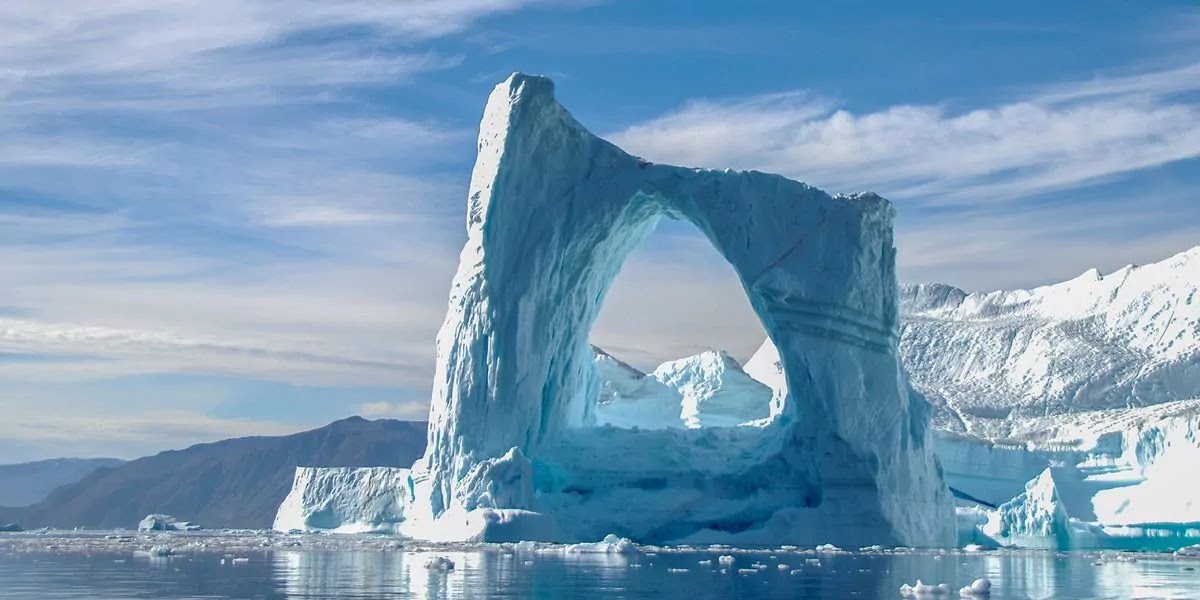Introduction: The alarming impact of climate change on the Arctic region has been well-documented, with rising temperatures leading to the accelerated melting of glaciers. However, recent studies have shed light on an unexpected consequence of this phenomenon - the release of significant amounts of methane, a potent greenhouse gas. This article explores the findings of various research studies that highlight the connection between shrinking Arctic glaciers and the emergence of a new methane source. It examines the implications of this discovery on global temperatures and emphasizes the urgent need for effective climate change mitigation strategies.
Arctic Glacier Melting and Methane Release: The melting of Arctic glaciers has become increasingly rapid in recent years, resulting in the release of substantial volumes of freshwater into the surrounding environment. This influx of freshwater infiltrates the underlying sediments and permafrost, creating ideal conditions for the generation and release of methane gas. Studies conducted in Norway, Svalbard, and other Arctic regions have detected elevated levels of methane emissions associated with the melting glaciers, which indicate the emergence of a previously unrecognized methane source.
Also Read:- Ancient Feathers: How Some Birds Survived Mass Extinction
- Hi-Fi Rush Dev Addresses Xbox Exclusivity Concerns, Confirms No Shelving of Platforms after Acquisition
Unveiling the Groundwater Springs of Norway: In Norway, the melting glaciers have unveiled a new methane source in the form of groundwater springs. Researchers have discovered that as the glaciers melt, large amounts of water are discharged through springs that are connected to the groundwater system. This water carries dissolved methane from deep within the Earth's crust, resulting in the release of substantial methane emissions into the atmosphere. This discovery highlights the complexity of the Arctic ecosystem and the interconnectedness of various natural processes.
Implications for Global Temperatures: The release of methane from melting Arctic glaciers has significant implications for global temperatures and climate change. Methane is a potent greenhouse gas, with a warming potential many times greater than carbon dioxide over a shorter time frame. The additional methane emissions contribute to the amplification of the greenhouse effect, leading to further warming and the acceleration of climate change. This positive feedback loop underscores the urgency of addressing the root causes of glacier melting and mitigating methane emissions.
The Role of Climate Change: The shrinking Arctic glaciers and the subsequent release of methane are closely linked to anthropogenic climate change. The increased greenhouse gas emissions from human activities have led to rising temperatures, causing the Arctic to warm at a faster rate than other regions. As a result, the glaciers are melting at an alarming pace, uncovering new methane sources. This vicious cycle highlights the need for global cooperation and immediate action to reduce greenhouse gas emissions and combat climate change.
Mitigation Strategies: Addressing the challenge of methane emissions from melting Arctic glaciers requires a multi-faceted approach. Firstly, it is crucial to prioritize the reduction of greenhouse gas emissions on a global scale. Transitioning to cleaner energy sources, promoting energy efficiency, and adopting sustainable land management practices are essential steps. Additionally, monitoring and understanding the complex dynamics of methane release from melting glaciers will contribute to more accurate climate models and targeted mitigation efforts.
The shrinking Arctic glaciers have unveiled a new source of methane, further exacerbating the challenges posed by climate change. The release of methane, a potent greenhouse gas, from the melting glaciers has serious implications for global temperatures and climate stability. Urgent action is required to mitigate greenhouse gas emissions, reduce glacier melting, and prevent further amplification of the greenhouse effect. By prioritizing sustainable practices and international collaboration, we can strive to safeguard the Arctic and the planet for future generations.
Read More:- Red Dead Redemption Remasters: What Fans Can Expect
- The Pros and Cons of Smart Homes: Balancing Convenience and Privacy
That's it for this article.
Thanks for Visiting Us – Mirror7News.com


Post a Comment